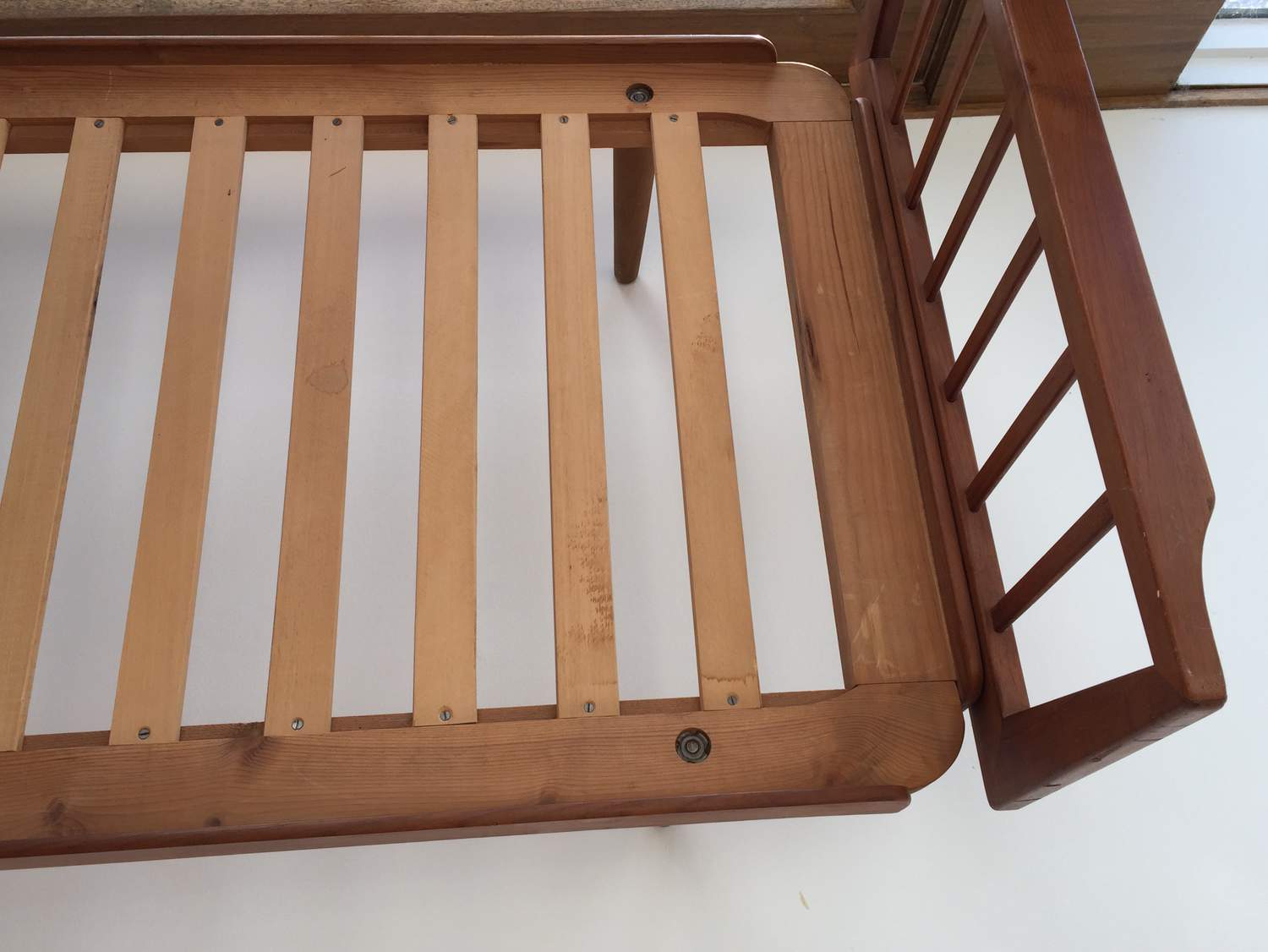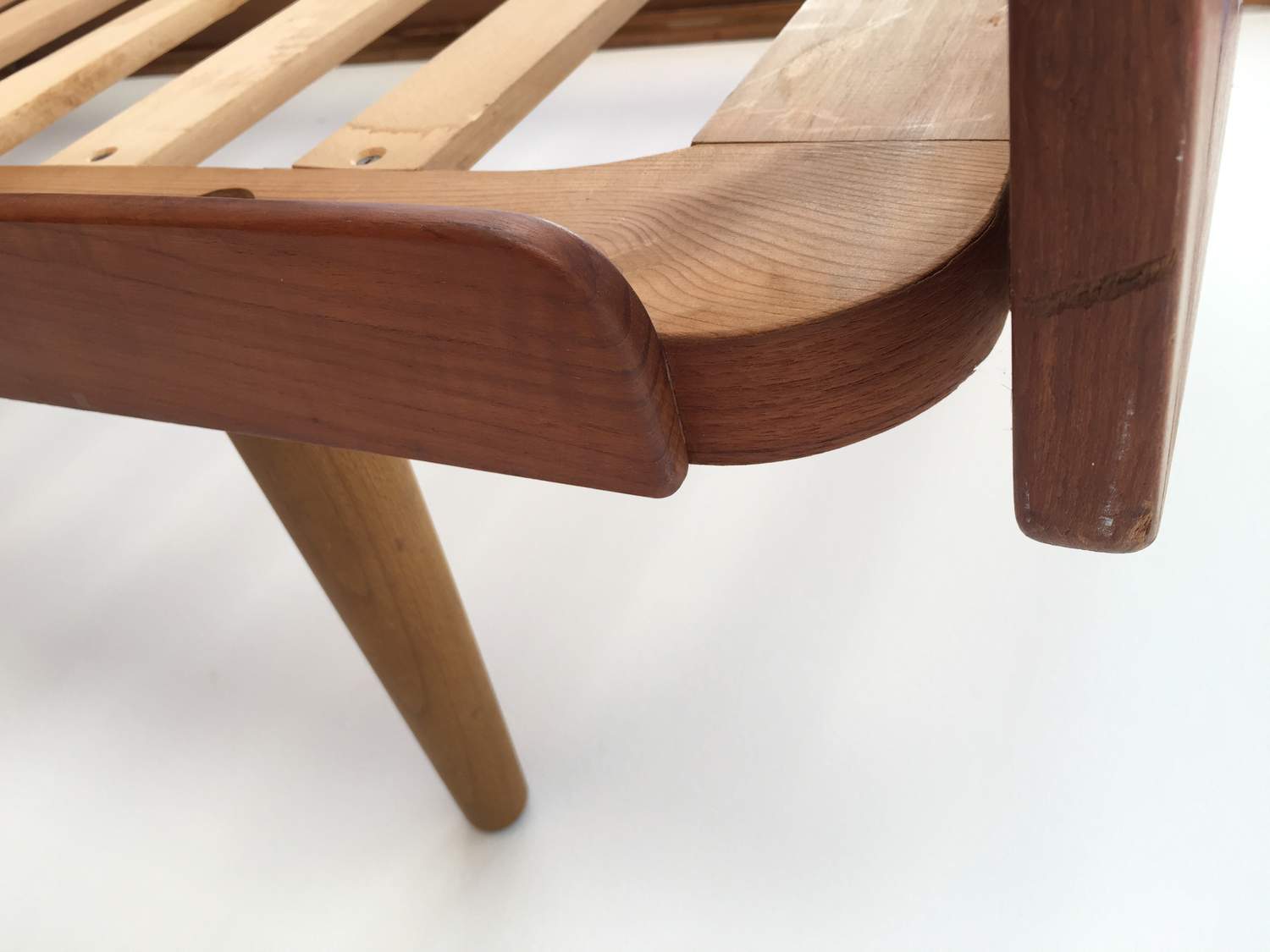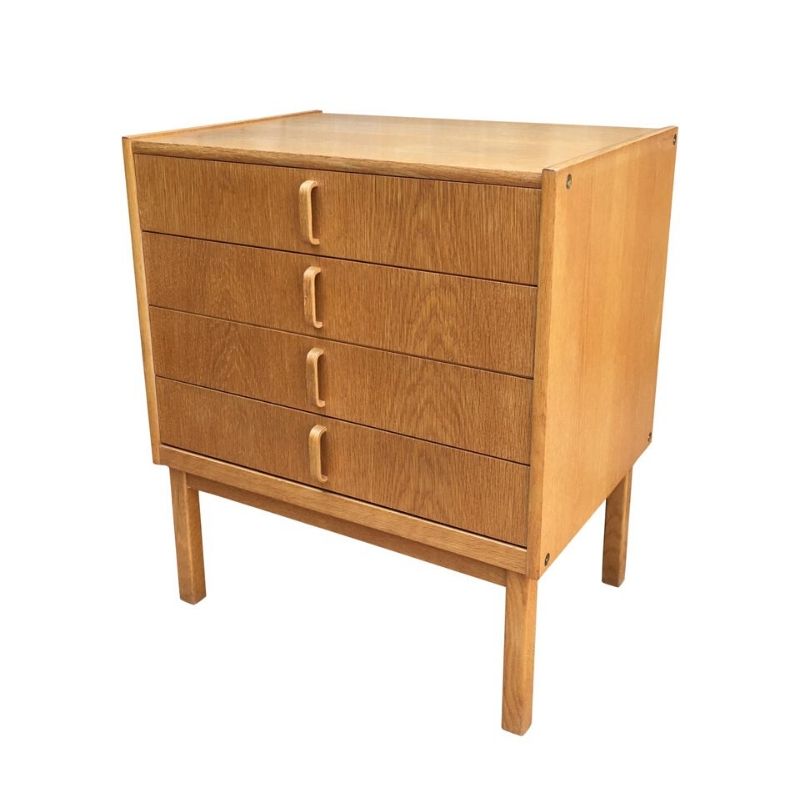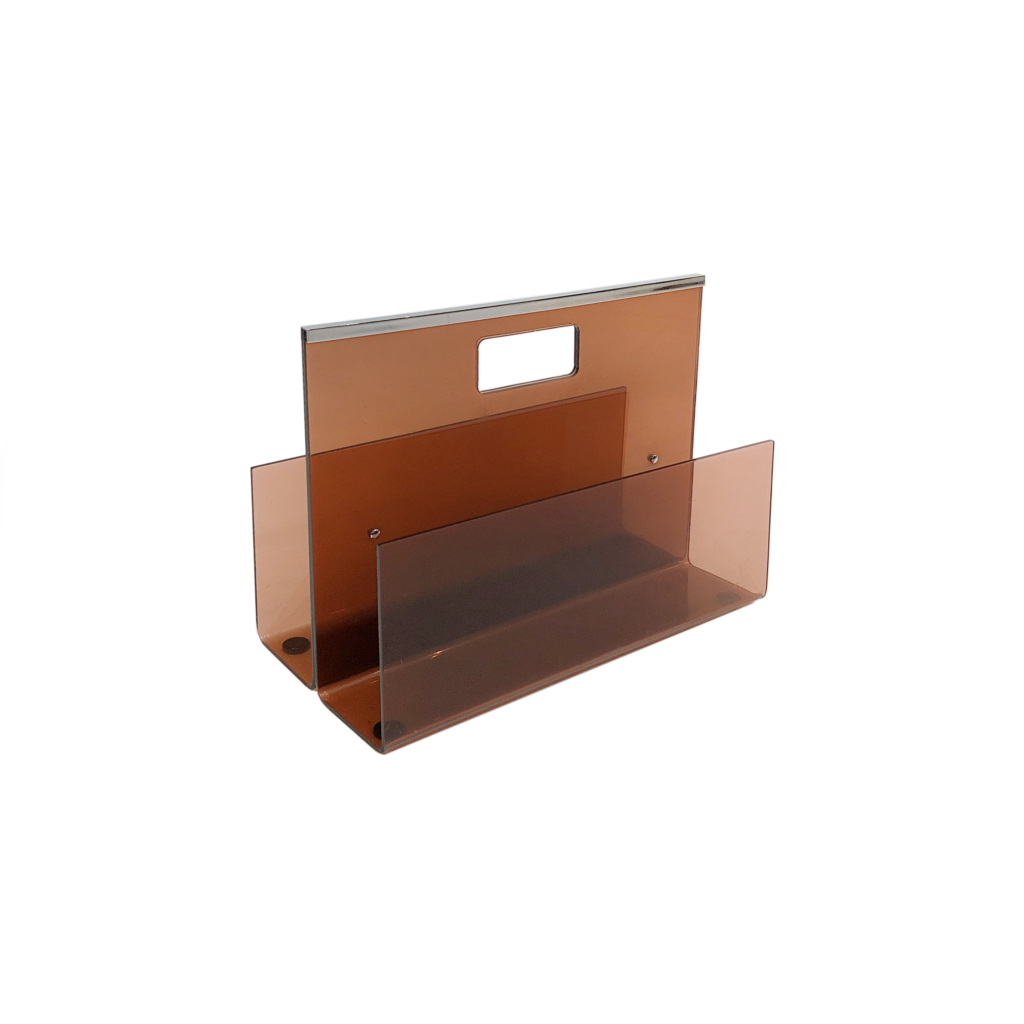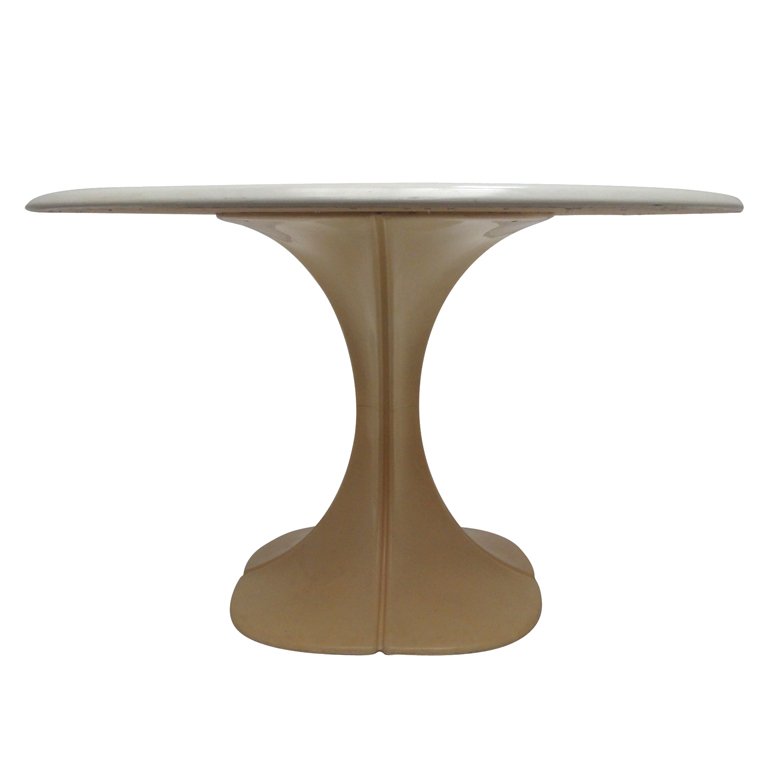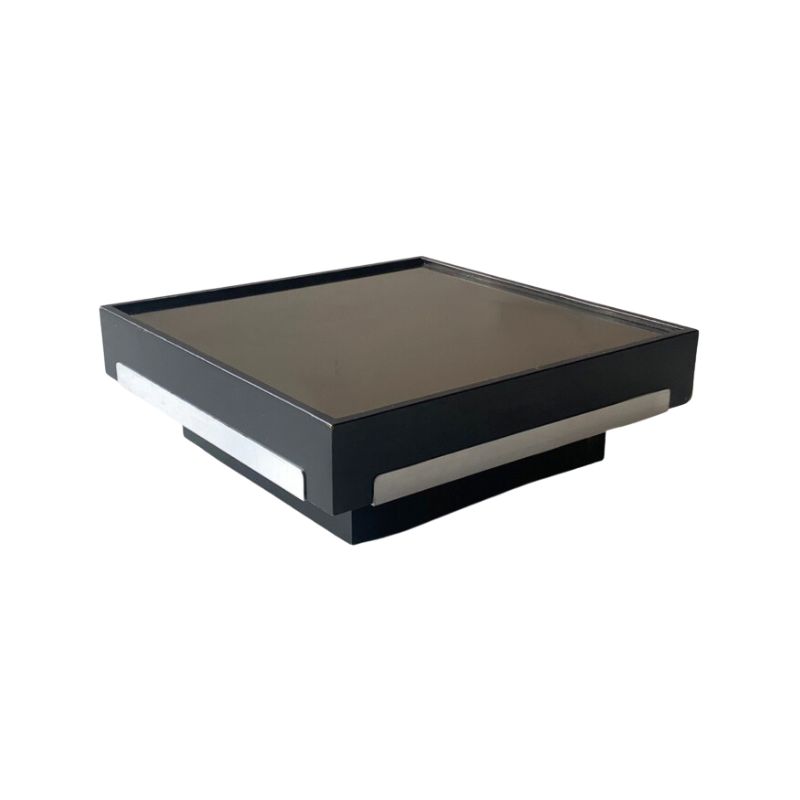Interesting! The first thing of note that I see is that the screws on the bottom fastening the armrests are square drive heads. This suggests either that they are replacement screws, or more intriguing that the daybed is Canadian. I think that Canada might make sense, as it looks American in style, but it is teak.
The frame is pine (or some other coniferous softwood like hemlock, fir, etc).
Leif, thank you for your Sharp observations! I believe those screws are replacements as the opposite arm rest still has what I think are the original screws since they match the "flathead" screws on the slats. Also note that the fabric is not original. Originally it had this red plaid fabric that was marked "made in Italy".
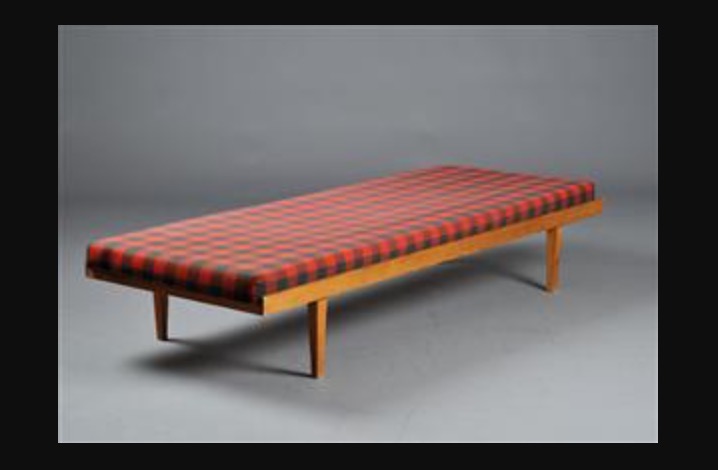

Well then they are definitely replacement screws.
The wood slats under the mattress are a wood called Ramin, which was a common secondary wood for the era in Scandinavia. It used to be very common to get dowels made out of the same wood.
Everything about the construction of this piece fits with Scandinavia. It even shows one of the very few flaws in managing wood movement that they were prone to commit: veneering pine end grain, especially around curves like this. The veneer separates, often with a gap like you see there, when the pine shrinks during dry times. Often the veneer then chips from use.
The only odd thing is that it really looks American in styling. But the construction is right, and the styling wrong, in this case.
I would guess the armrests were optional. This would be consistent with other sofas like this that worked with modular arrangement, and then there is the fact that there is an extra piece of teak between the veneered pine and the armrest. It is hard to imagine that extra piece of teak would be there if the armrests were standard.
If you need any help, please contact us at – info@designaddict.com


 <img class="wpforo-default-ima
<img class="wpforo-default-ima
